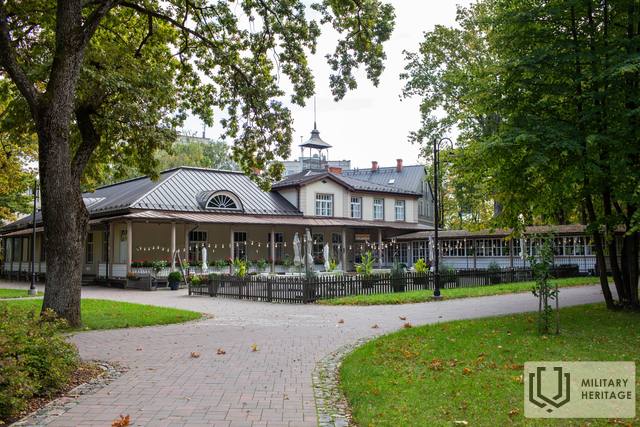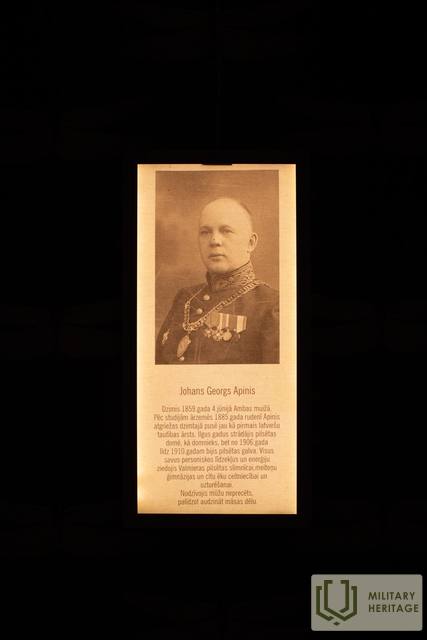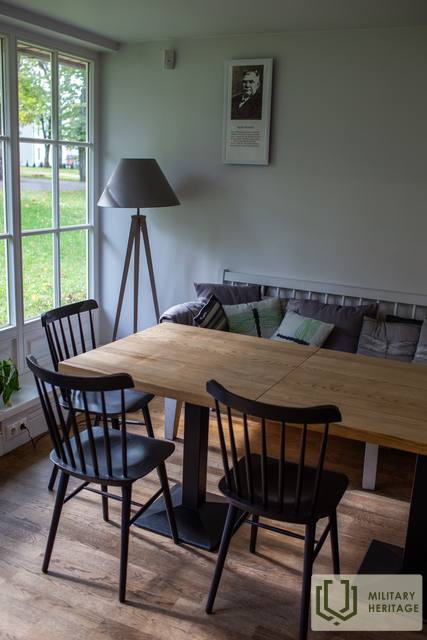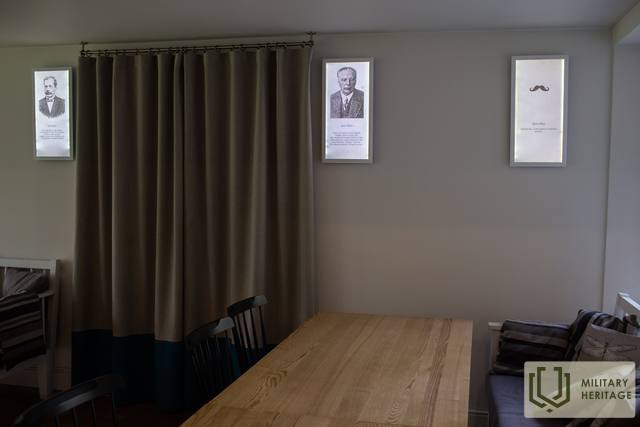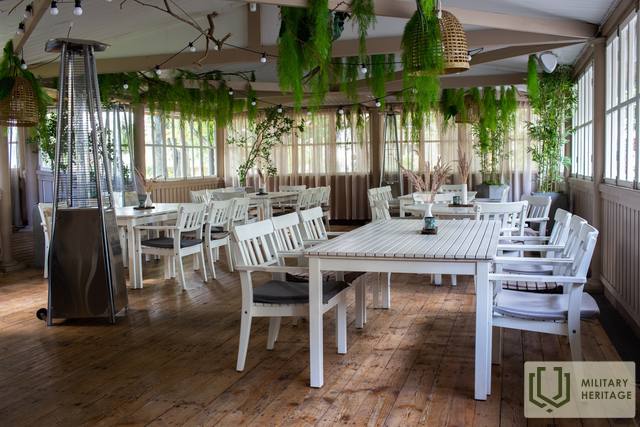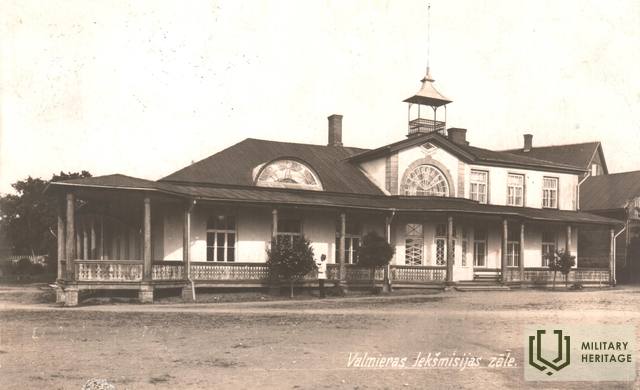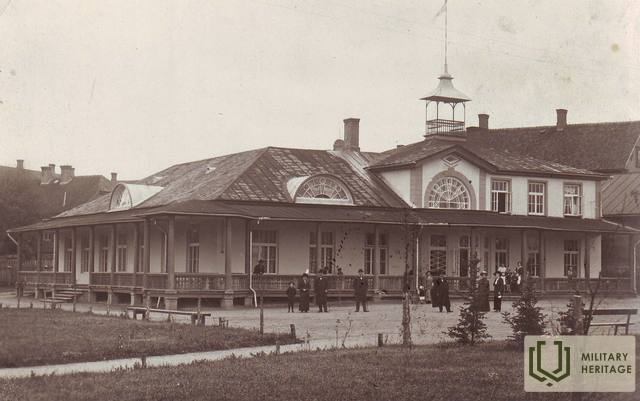Bachelor Park and Concert Hall "Valmiera"
Memorial site

The park is located in the center of Valmiera.
In 1914, eight enterprising residents of Valmiera decided to set up a park with a non-alcoholic buffet and a book table on the outskirts of the city at that time - that's how the history of the Bachelor Park began.
The construction of the park was interrupted by the First World War.
Already at the beginning of the war, a hospital for wounded soldiers was set up in the hall of the pavilion. On the second floor of the building was the Valmiera Red Cross Committee, its central gift reception point and warehouse.
The Valmiera committee was one of the busiest in Latvia. In October 1914, it had 33 infirmaries with 375 beds under its care. The committee collected funds for the maintenance of infirmaries and the treatment of wounded soldiers, for supplying the cured with warm clothes and travel money, for feeding wounded soldiers passing through, and also sent gifts directly to the front. One of the most active employees of the Red Cross Committee in collecting funds was the later first Prime Minister of independent Latvia, Kārlis Ulmanis (1877-1942).
The history of the founding of the legendary Latvian rifle battalions is also connected with the Vecpuišu Park. On August 4 and 5, 1915, the commission for accepting volunteers worked in the park premises, and on August 6, the young soldiers were taken out for training. Also later, the boys of Valmiera and the surrounding area were taken out of here many times in military marches. Various cultural and charity events were also held in the park during the war, however, all the funds obtained from them were used to help the victims of the war.
On November 18, 1918, the national flag was raised as the state flag for the first time in Valmiera and the anthem of the new country "God bless Latvia" was played for the first time.
During the Second World War, there was an infirmary in the pavilion building of the Bachelor Park and archers were taken to the battles. During the Soviet occupation, on August 12, 1940, by the decision of the Valmiera city board, the park was renamed Komjaunatnes park.
After the Second World War, the pavilion built by architect Freiberg was used both as a cultural center (until 1966) and as a sports school. At the end of the nineties (1998) the Vecpišu Park pavilion started to get busy again.
The founders of the park can be seen in the photos placed in the premises of the "Vecpuisis" restaurant.
Used sources and references:
Talis Pumpuriņš, Cēsu Museum of History and Art
https://lr1.lsm.lv/lv/raksts/latvijas-perles/vecpuisu-parks-vieta-kur-romantika-saplust-ar-skaistumu.a69707/
https://www.valmiera.lv/lv/pilseta/dabas_teritorijas/skveri_un_parki/vecpuisu_parks/
http://www.periodika.lv/periodika2-viewer/view/index-dev.html?lang=fr#panel:pa|issue:/p_003_xbrl2001n20|article:DIVL319|issueType:P
http://www.periodika.lv/periodika2-viewer/view/index-dev.html?lang=fr#panel:pa|issue:/p_003_xbrl2001n21|article:DIVL362|issueType:P
Related timeline
Related stories
Jānis Lapiņš and the sketch of the first Latvian red - white - red flag
The creation of the Latvian national flag took place during the First World War. In 1915, when creating the flags of the Latvian Rifle Battalion, some artists offered red-white-red colors for the flag cast. After the teacher and journalist Jānis Lapiņš threw the red-white-red flag in the second half of 1916, it was made by his student, Marianna Straumane, a teacher at the Valmiera Refugee Shelter. It is the first known and actually made Latvian national flag, which has also survived to this day.
March 1917 - an important month in the history of Valmiera and Latvia
In March 1917, more than a year before the proclamation of the State of Latvia, the Vidzeme Provisional Land Council was founded in Valmiera, which adopted a resolution on Latvia's right to autonomy and self-determination. On the day of the founding of the Council, a red-white-red flag was raised at the meeting place for the first time.






